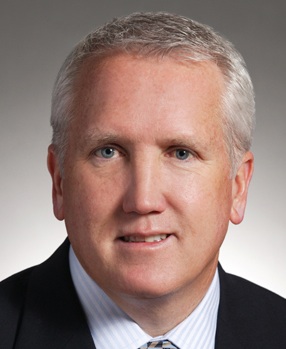Trained as an accountant, Ed Littleton started his career with Arthur Andersen & Co. After a stint at an industrial contractor, he joined the big brokerage Willis, where he held various positions. Later, he became vice president of risk management for Skanska and then construction practice leader for Wachovia Insurance Services, Atlanta. With Balfour Beatty, where he has worked since 2006, Littleton is based in Dallas. We talked with him about his career, the trust between a client and a broker, and how Balfour Beatty manages its risks.
What is your background, and how did you begin working as a risk manager?
Ed Littleton I grew up fascinated with architecture and building and began college as an engineering major. I switched to accounting in order to get a broader perspective on business as a whole. Over time, I moved into a vice president-finance role with one of my clients, a specialty industrial contractor. In that role, I not only managed the day-to-day insurance and bonding but got to see a very broad perspective on business risks, including those that could have catastrophic impacts.
Why is the relationship with an individual insurance or surety bond broker so important? Does it help keep costs down?
It’s a matter of trust, confidence and familiarity. Each side needs to know the other’s capabilities and [be able] to trust that the feedback and guidance is genuine. The industry got a black eye a few years back with the contingent commission issue. Afterward, many clients realized they were guided to a particular market—perhaps not the best one for the client—by their broker just to allow the broker a higher compensation. The changes since that time have helped reduce this conflict, but certainly some level of distrust remains.
Is there any major change since the recession in the way you go into the market to buy coverage, insure risks or obtain surety credit?
 |
| Littleton |
Lately, more people think about risk control holistically, including safety, all insured risks, surety, regulatory compliance and ethics. Is it useful to put them together, or is it better to separate these elements?
In terms of purchased coverage, surprisingly little has changed. The markets remain very competitive for quality risks. We are purchasing policies, limits and endorsements just as we have for the past five years. However, we are putting a lot more underwriting and risk mitigation in place for subcontractor exposures, for both insurance and contractual performance/financial risk. Surety credit remains stable, but higher-risk contractors and subcontractors are being forced into new surety markets, some of which are non-standard. It is becoming ever-more critical to look at risk holistically. It’s illogical to think you can decide what coverage to purchase, at what cost and at what limits without understanding the overall risk embedded in the business. In an ideal environment, the risk-management function is working alongside management, operations, finance, safety, legal and estimating to determine the overall risk profile all the way down to the project level. From there, the organization can decide which risks to take and how to manage that risk insurance, contractual transfer to a third party, self-insurance or, say, mitigation.



Post a comment to this article
Report Abusive Comment